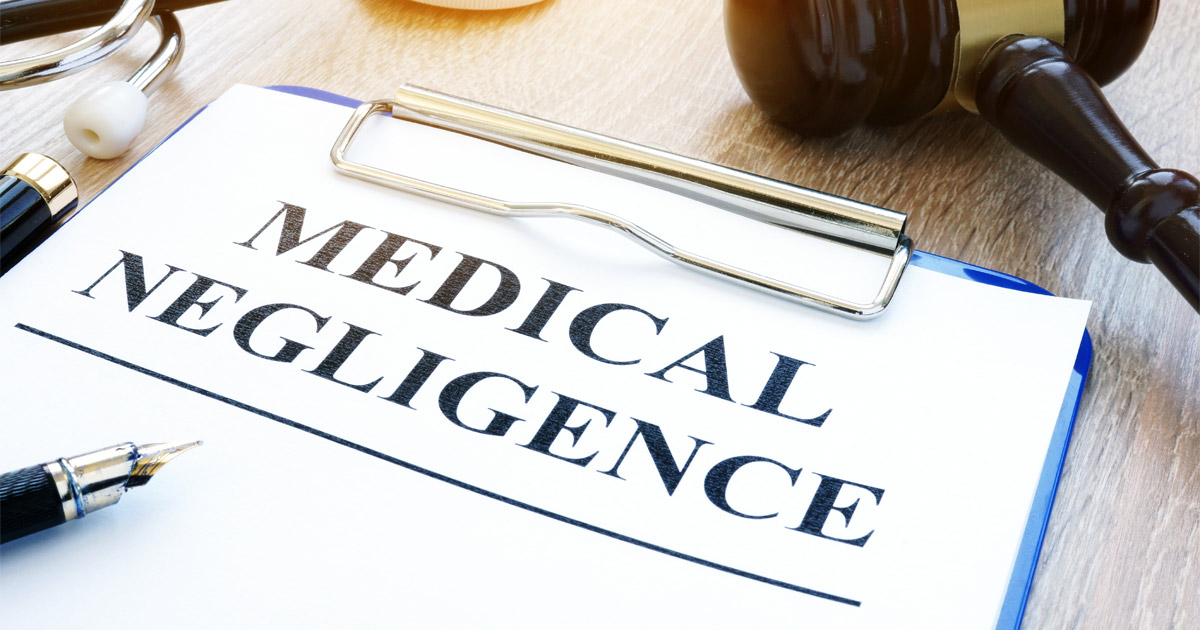What are the Four Ds of Medical Malpractice?
July 6, 2021
Medical malpractice has a specific legal definition to determine when a medical professional’s actions, or lack thereof, result in a patient’s personal injury. This occurs when a doctor, nurse, pharmacist, or other medical professional fails to perform their duties to a reasonable medical standard.
At its core, medical malpractice is negligence, just like a car accident injury claim. However, because of the medical complexities involved, these cases are generally much more difficult to resolve. A skilled medical malpractice lawyer may be able to help victims recover compensation if they have suffered injuries because of a medical professional’s negligence.
The Four Ds
Medical malpractice lawyers often refer to the four Ds, the requirements for establishing a medical malpractice claim. Following the strategy of the four Ds, a medical malpractice lawyer can help their clients by working to prove a doctor committed negligence and acted in a manner not consistent with standard medical practice. All this in an effort to help the victim collect maximum compensation.
Duty. The first D is a duty of care. When a doctor-patient relationship has been established, the doctor owes the patient a duty of care to provide reasonable medical care. However, a doctor does not owe this duty of care to every person.
A doctor does not owe a duty of care to someone involved in a roadside accident that the doctor happens to encounter during their evening commute home. A doctor does not owe a duty of care to a person who is choking at a nearby table while the doctor is dining with their family.
These examples illustrate the importance of establishing that doctor-patient relationship. This relationship would exist when a person goes to see their family doctor or is about to undergo surgery. In these instances, the doctor-patient relationship has been established, so the doctor owes a reasonable duty of care to the patient.
Dereliction. Dereliction is the failure of the doctor to adhere to the duty of care. A doctor was derelict in their duty when they amputated the wrong foot of a motorcycle accident victim. A doctor could be derelict in their duty when they do not administer a correct dose of anesthetic. A doctor may also be derelict in their duty when they examine a patient but not find what is wrong with them, but a later examining doctor does.
Any of these examples would show a doctor’s dereliction of their duty to the patient. This is the biggest component of a medical malpractice claim. It is not easier to establish a doctor-patient relationship, but the complexities involved in determining whether a doctor acted outside of an established medical standard of care takes skill, knowledge, and experience.
Direct causation. To be liable for a patient’s injuries, a doctor’s actions must have been the direct cause of the patient’s injuries. After a patient has established the difficult piece of dereliction, they then have the burden of proving the doctor directly caused additional harm. This can present challenges, especially if the person was already injured. The use of medical experts might be necessary to show that, even though the victim came to the doctor with injuries, the doctor’s actions made those injuries worse and caused new ones.
Although frequently not as challenging as proving dereliction, this step can present difficulties, too. Many medical professionals do not like to speak ill of their colleagues. This can make it difficult for victims to get someone to help them prove that a doctor caused them additional harm. To help with this, a medical malpractice lawyer may have medical expert resources who they can rely on to help clients prove direct causation.
Damages. To collect damages under any theory of negligence, a victim must prove that they have suffered harm. This harm can be physical, mental, or financial.
Common damages that medical malpractice victims can receive include the following:
- Medical expenses
- Rehabilitation costs
- Pain and suffering
- Emotional distress
- Lost income
- Lost earning potential
Common Medical Malpractice Claims
Medical malpractice claims happen with more than just doctors and surgeons, those who tend to be the most frequently sued. Here are a few of the most common reasons for medical malpractice lawsuits.
Misdiagnosis. Misdiagnosis occurs when a patient sees a doctor and the doctor examines them and determines they have a medical issue. Unfortunately, the doctor has made an incorrect diagnosis and the patient really has a different medical issue. This can cause the patient pain from undergoing unnecessary procedures, taking medication they do not need, and prolonging the symptoms and severity of what actually ails them.
Delayed diagnosis. Closely related to misdiagnosis, delayed diagnosis happens when a doctor initially makes no diagnosis of a patient’s issue but then, on further inspection, figures out what is really wrong. Much like a misdiagnosis, the doctor has caused the patient extra suffering as their medical condition worsens from not being treated.
Incorrect prescription. Sometimes a doctor rushes to see patients and does not think about the ramifications of certain prescriptions and how they might interact with other drugs a patient takes. When a doctor prescribes a medication to a patient, they need to ensure the patient is not on any other drugs that might interact negatively with the new drug.
Pharmacists may be liable to victims when they provide the wrong prescription, too. A pharmacist must take great care to ensure that what the doctor prescribes is dispensed to the patient. The wrong drug or the wrong dosage could have catastrophic consequences.
Surgical errors. This type of medical malpractice can occur in different ways. A surgeon may operate on the wrong body part. An anesthesiologist might give the patient too much or not enough anesthesia. There might be complications during surgery, leading to additional medical issues. Doctors have also been known to leave surgical items in a patient’s body after they have finished the surgery.
Childbirth injuries. A tragic example of medical malpractice happens during pregnancy and childbirth. If a pregnant woman is not properly treated, her and her baby’s health may be at risk. Similarly, during childbirth, the mother may receive medication that helps ease her pain. Medical tools may also be used to help birth the baby. Doctors and nurses must use these drugs and tools in a specific way and, if they are not, the mother or baby could suffer serious and even life-threatening injuries.
Lack of informed consent. A doctor must provide a patient with information about their medical condition and the risks of any medical procedures or medication they may take. When a doctor does not give a patient all of the information, a patient may not be able to make an informed decision. It is the patient’s body that is undergoing a procedure, and the patient should be able to make a decision based on the knowledge available. When a doctor fails to provide information or does not provide accurate information, a patient may have a medical malpractice claim based on lack of informed consent.
Each of these examples causes the patient unnecessary stress and anxiety about their own health. It also serves to reduce the patient’s confidence and trust in their medical professional. These actions can also place a severe and long-lasting financial strain on the patient, as they must endure additional doctor appointments, more medical procedures, and may have to take extended time off work.
Baltimore Medical Malpractice Lawyers at LeViness, Tolzman & Hamilton Protect Patients’ Rights
You see a doctor or surgeon to get better, not worse. Unfortunately for some victims, their medical journey leaves them worse off. When a lack of proper care rises to the level of medical malpractice, you need to explore your legal options to help you cover your medical expenses and other costs. The experienced Baltimore medical malpractice lawyers at LeViness, Tolzman & Hamilton can provide you the legal advocacy you need. Call us at 800-547-4LAW (4529) on contact us online for a free consultation.
Our offices are conveniently located in Baltimore, Columbia, Glen Burnie, and Prince George’s County, where we represent victims throughout Maryland, including those in Anne Arundel County, Carroll County, Harford County, Howard County, Montgomery County, Prince George’s County, Queen Anne’s County, Maryland’s Western Counties, Southern Maryland and the Eastern Shore, as well as the communities of Catonsville, Essex, Halethorpe, Middle River, Rosedale, Gwynn Oak, Brooklandville, Dundalk, Pikesville, Parkville, Nottingham, Windsor Mill, Lutherville, Timonium, Sparrows Point, Ridgewood, and Elkridge.






